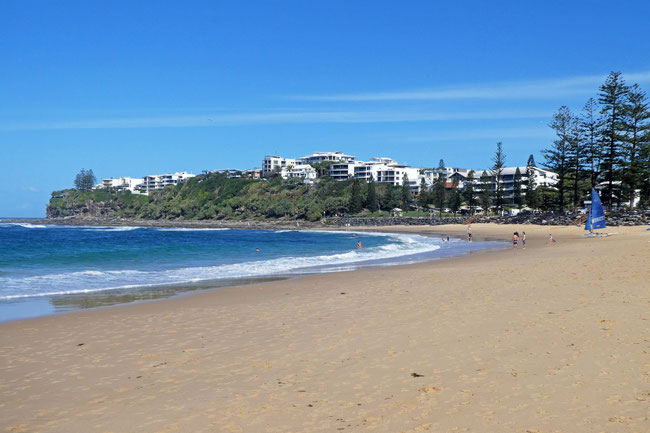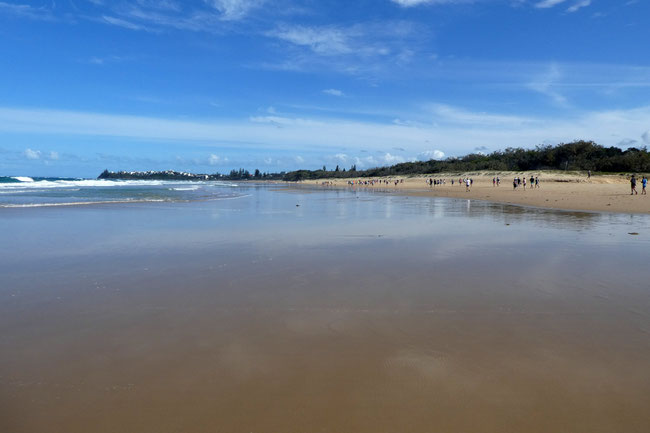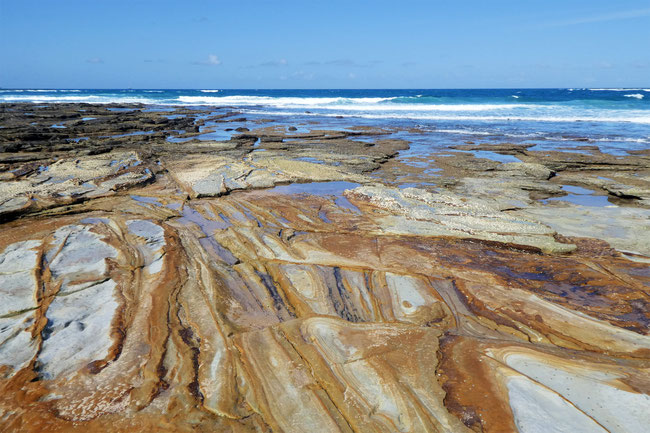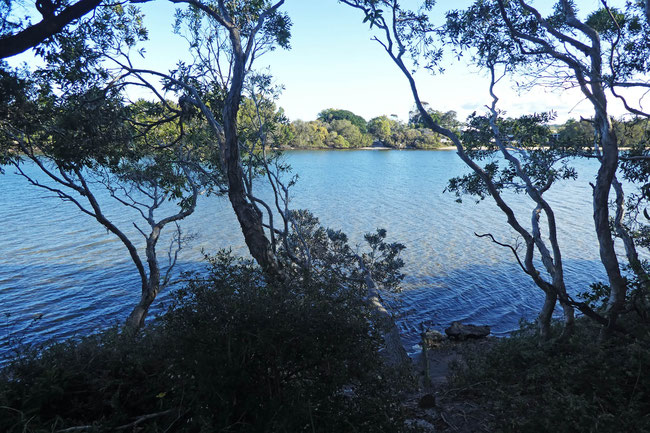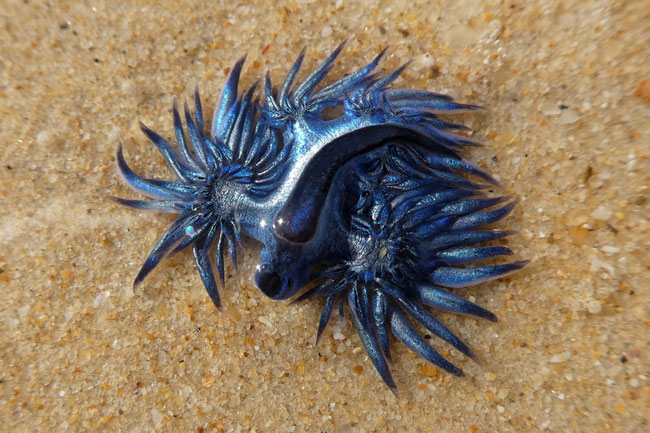
I like long walks on beaches, and there’s a long beach that runs north from Moffat Beach on the Caloundra Headland, near to where I’m staying.
Apart from the general beauty of the beach, there’s commonly some interesting and unusual wildlife to be seen here.For this particular walk some small pelagic animals that I rarely, if ever, see had been blown in by the wind.
If you’re happy to wade through Currimundi Creek, which cuts through the beach along the way, you can walk along this beach for twelve kilometres before Point Cartwright and the Mooloolah River obstruct your travel.
This is the starting point for this walk, at Moffat Beach:
The beach progressively changes names – I walked the first three kilometres from Moffat Beach along Dickey beach and Ballinger Beach to Currimundi Creek.
This is the view looking back along Ballinger Beach to Moffat Beach:
Walking along the beach here is popular!
There’s a low platform of nicely patterned rock along the way:
This walk has a great advantage in that you can walk into the adjacent suburbs at many points and catch a bus back to Moffat Beach, so you have time to walk further along the beach, and you don’t have to retrace your steps.
I turned inland to catch a return bus here, where Currimundi Creek cuts through the beach:
Currimundi Creek backs up into a large body of water behind the beach fore dunes, which is called Currimundi Lake:
Beach wildlife
When I walked along the beach, there had been a strong north-easterly wind with a long fetch blowing in from the Coral Sea, which, along with the usual bluebottles (also known as man o’ wars), brought in many interesting pelagic drifting animals.
This one is a velella:
Velellas are uncommon here – I’ve never seen them before; although, in other parts of the world they are known to blow up onto beaches in deep drifts.
As far as I know, velellas are the only true sailing animal. Many surface-living marine animals have evolved to be blown along with the wind, but they go straight down wind. The blade that you can see on the top of the velella is its sail. The sail aligns with the wind and is curved to act as an aerofoil, so the animal is pushed slightly sideways across the wind – it sails in a deep broad reach, rather than just running with the wind.
Some of the velella’s predators were also blown up on the beach; this rather psychedelic looking creature is a glaucus:
A glaucus is a floating nudibranch, or sea slug.
This is a violet sea snail, which blows mucous bubbles to keep it afloat:
All these animals are only a few centimetres across; this one is a bit bigger at about fifteen centimetres across; this is a blue-blubber jellyfish:
This isn’t one of Australia’s deadly jellyfish and will only sting you mildly; however, they commonly occur in huge, dense shoals, which makes it possible to be stung by many of them at the same time if you accidentally end up in the water with them.
There were some larger non-marine animals around, too; here’s an osprey that was resting on a low rocky headland:
Take a close look at those fish-hook talons! they look like they would make it hard to stand on a hard surface like this rock, although ospreys hardly ever come down to the ground.
There’s some nice bush on the banks of Currimundi Lake; I found this beady-eyed lace monitor in one of the casuarina trees:
The lace monitor also has impressive claws, although they only use them for climbing trees, digging into termite nests, and defence. This one is about 80 centimetres long. Here’s a closer view of its head, and slightly nervous-looking beady eye:
This was a pleasant and interesting beach walk. The walk starts here on Google maps.
Tags
If you enjoyed this blog post, you can find related posts under these headings:
Previous post:
< Previous post
Next post:
future post >
Share this The Journey and the Destination post using your favourite social media:
Would you like to add something, or ask a question? Add a comment below (you can leave the 'Website' field blank):

